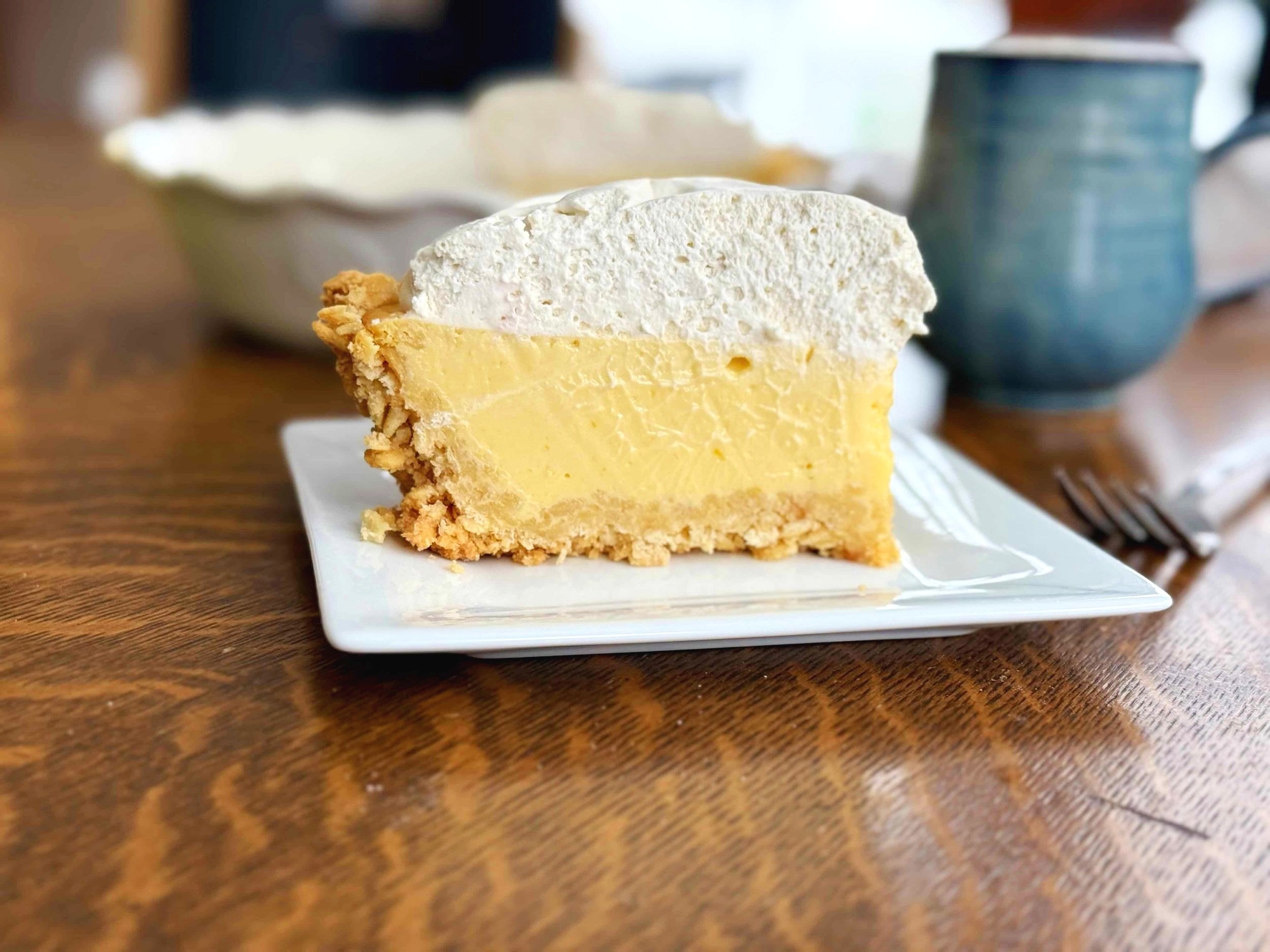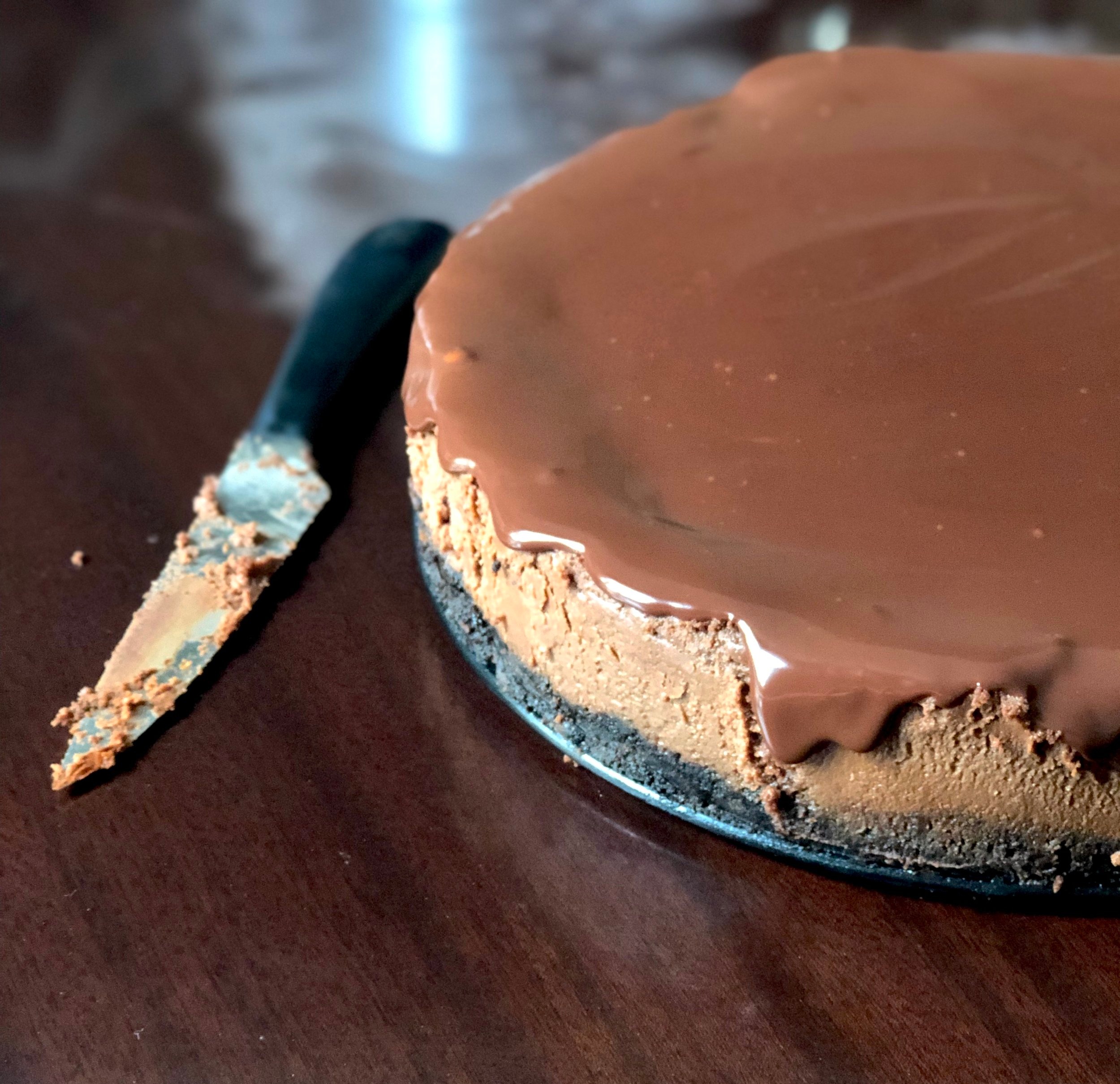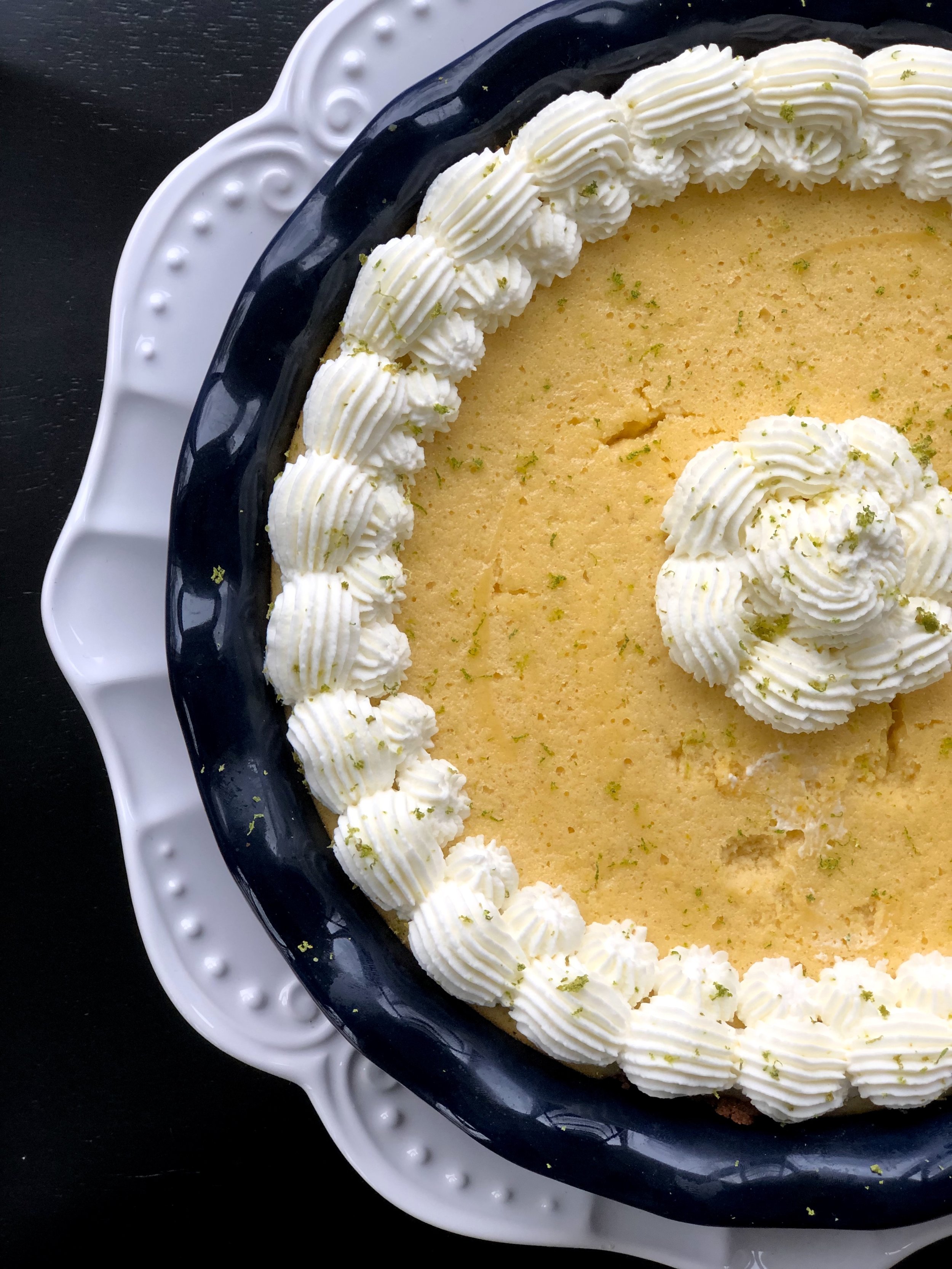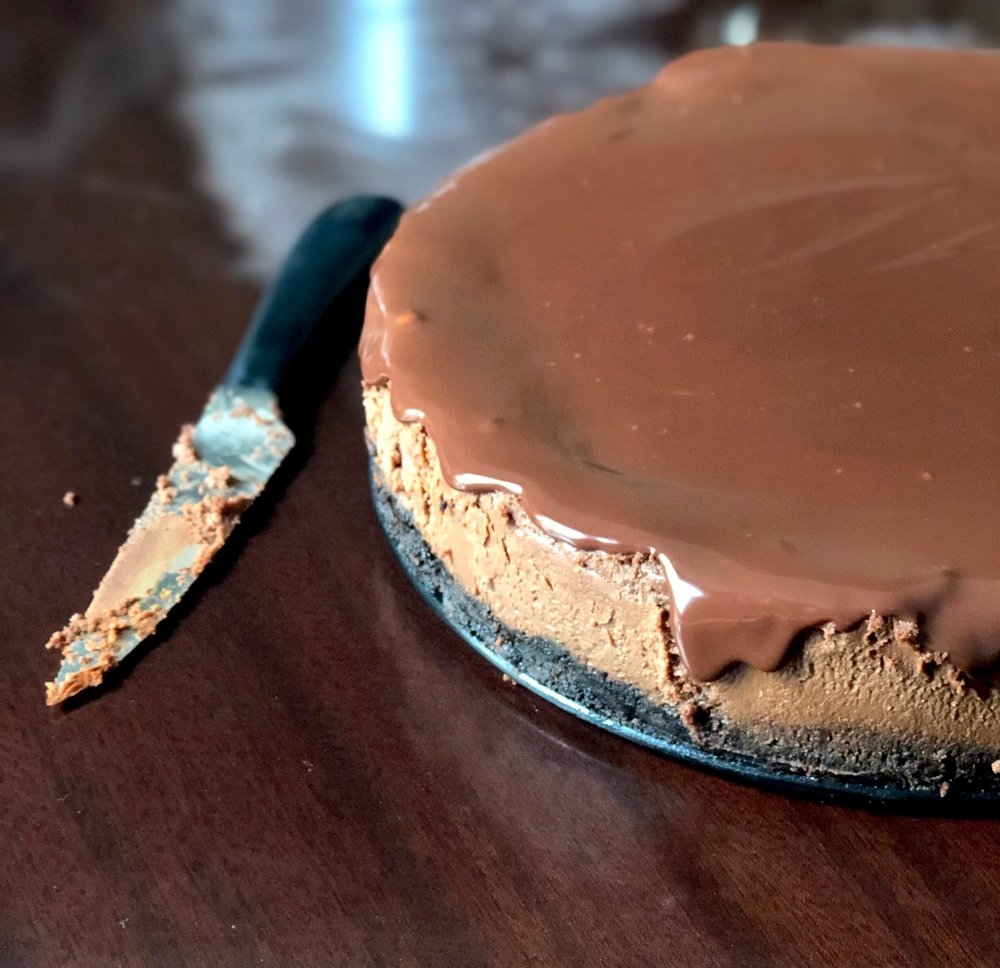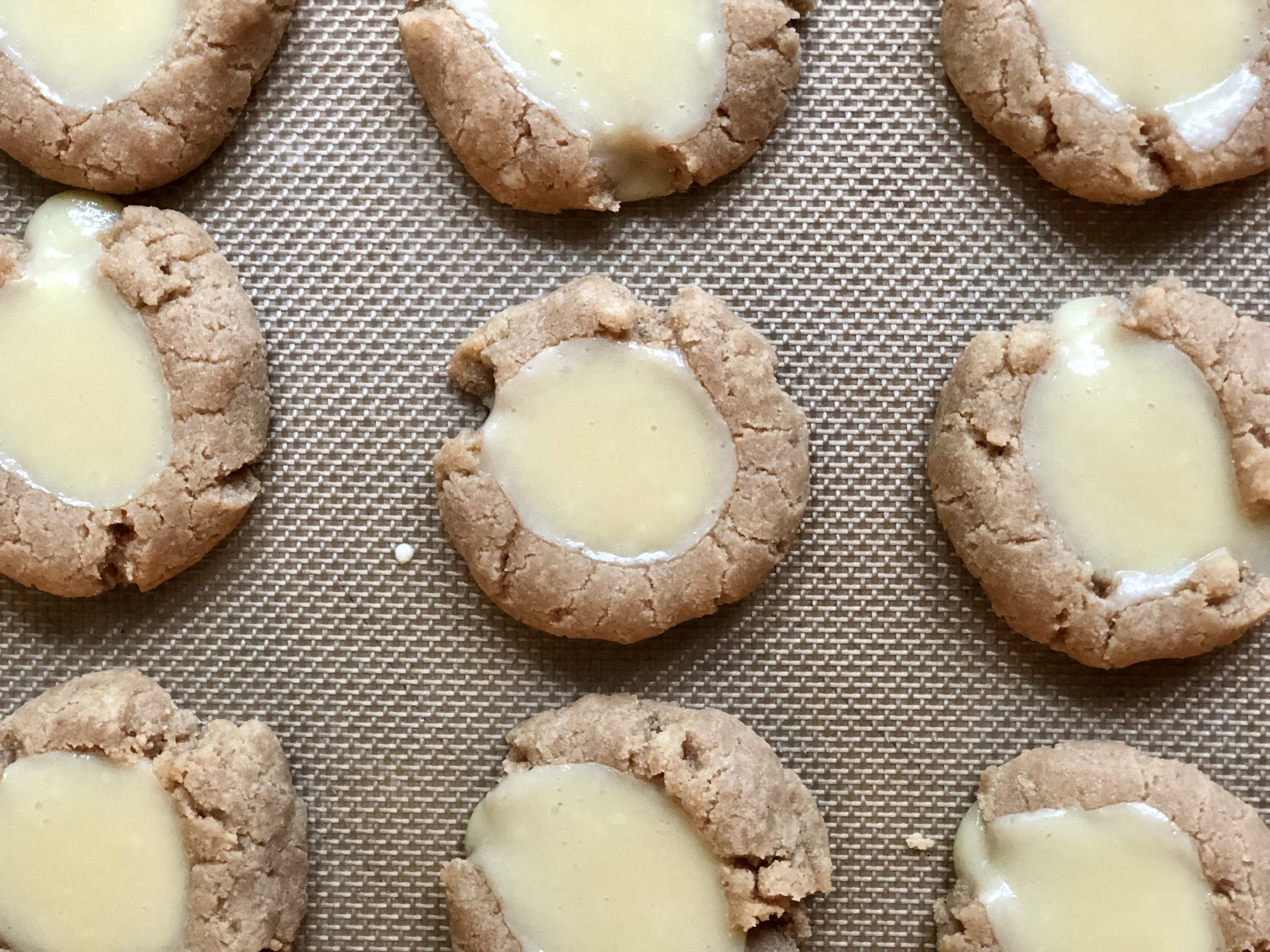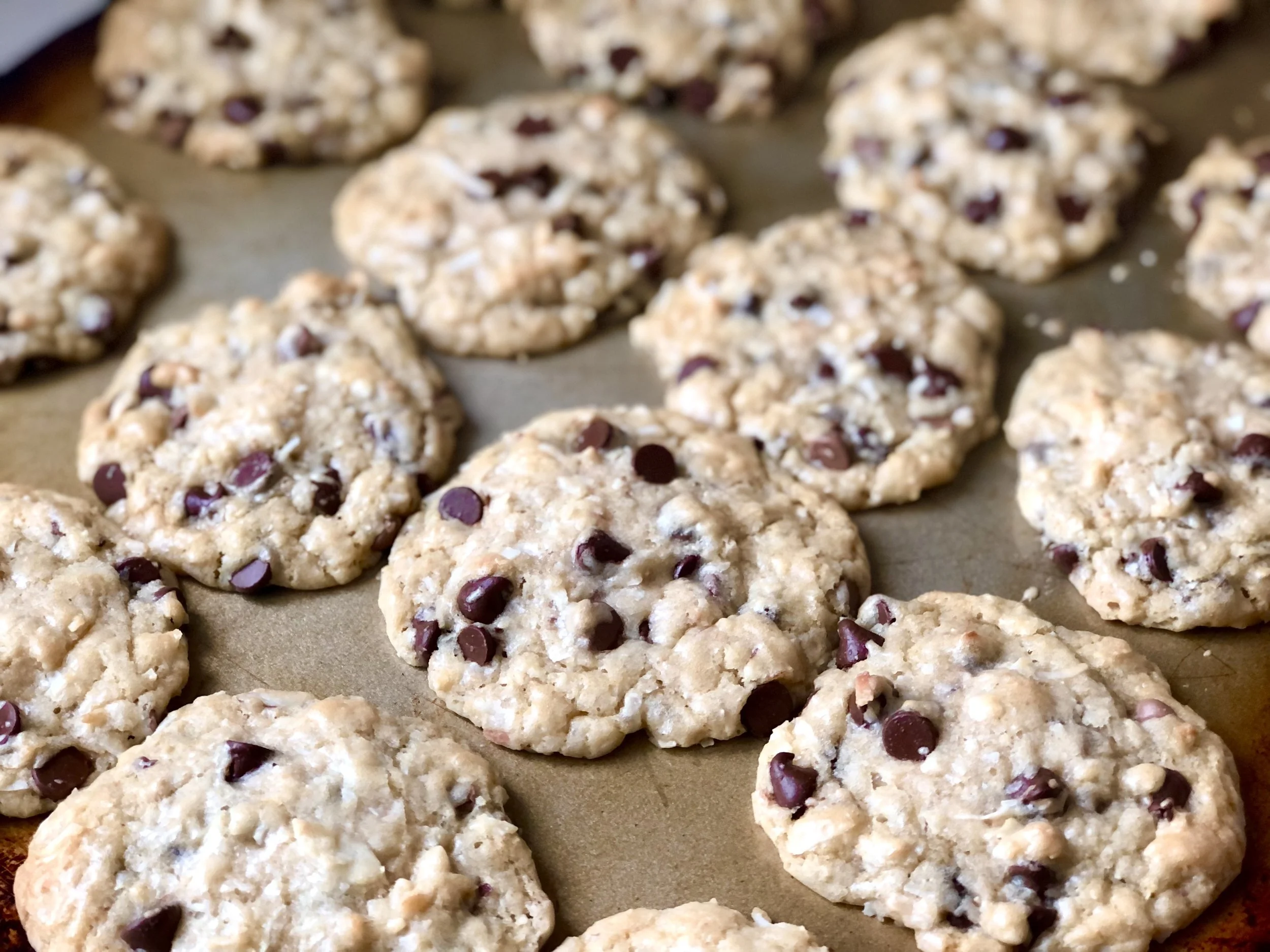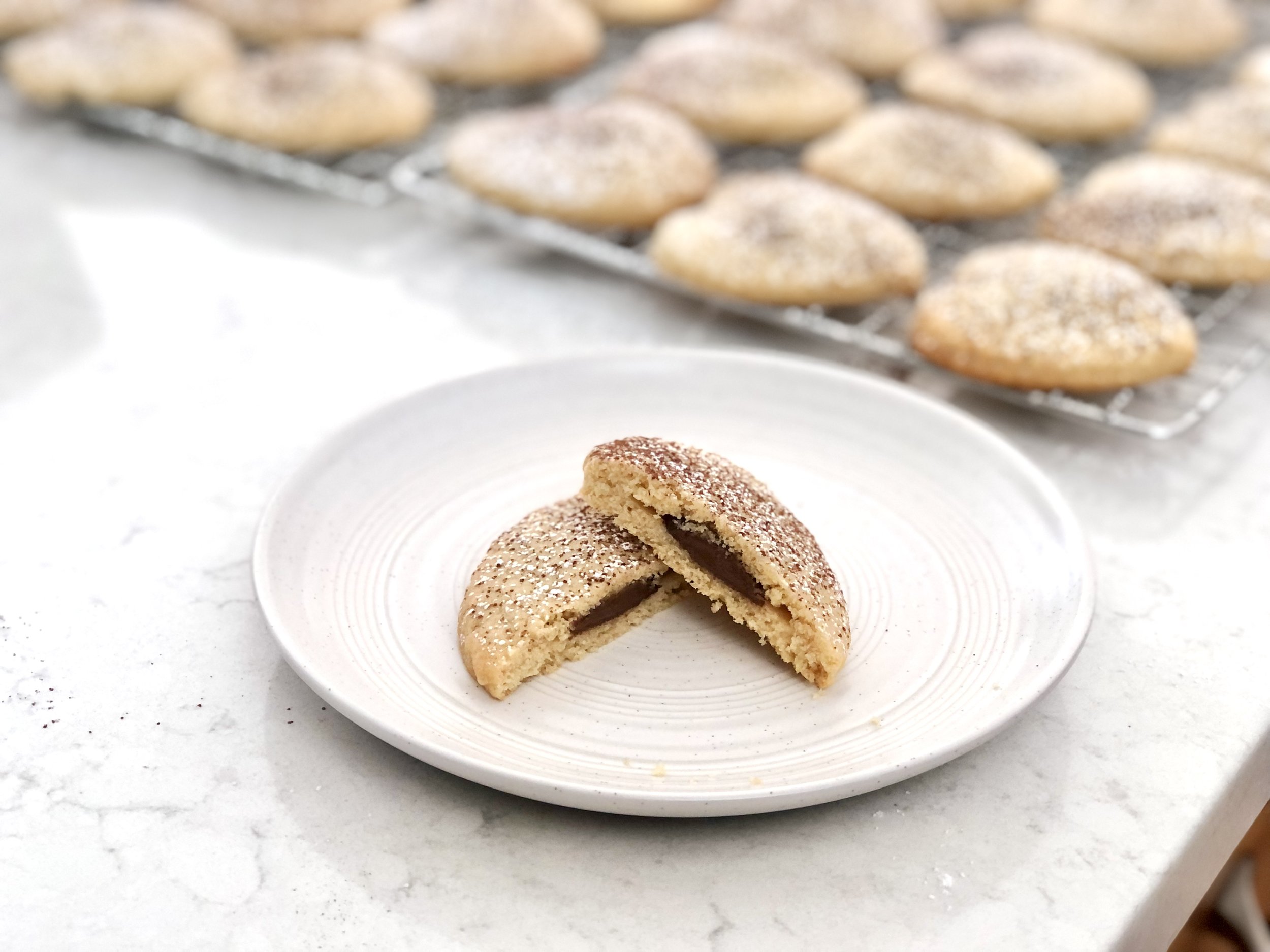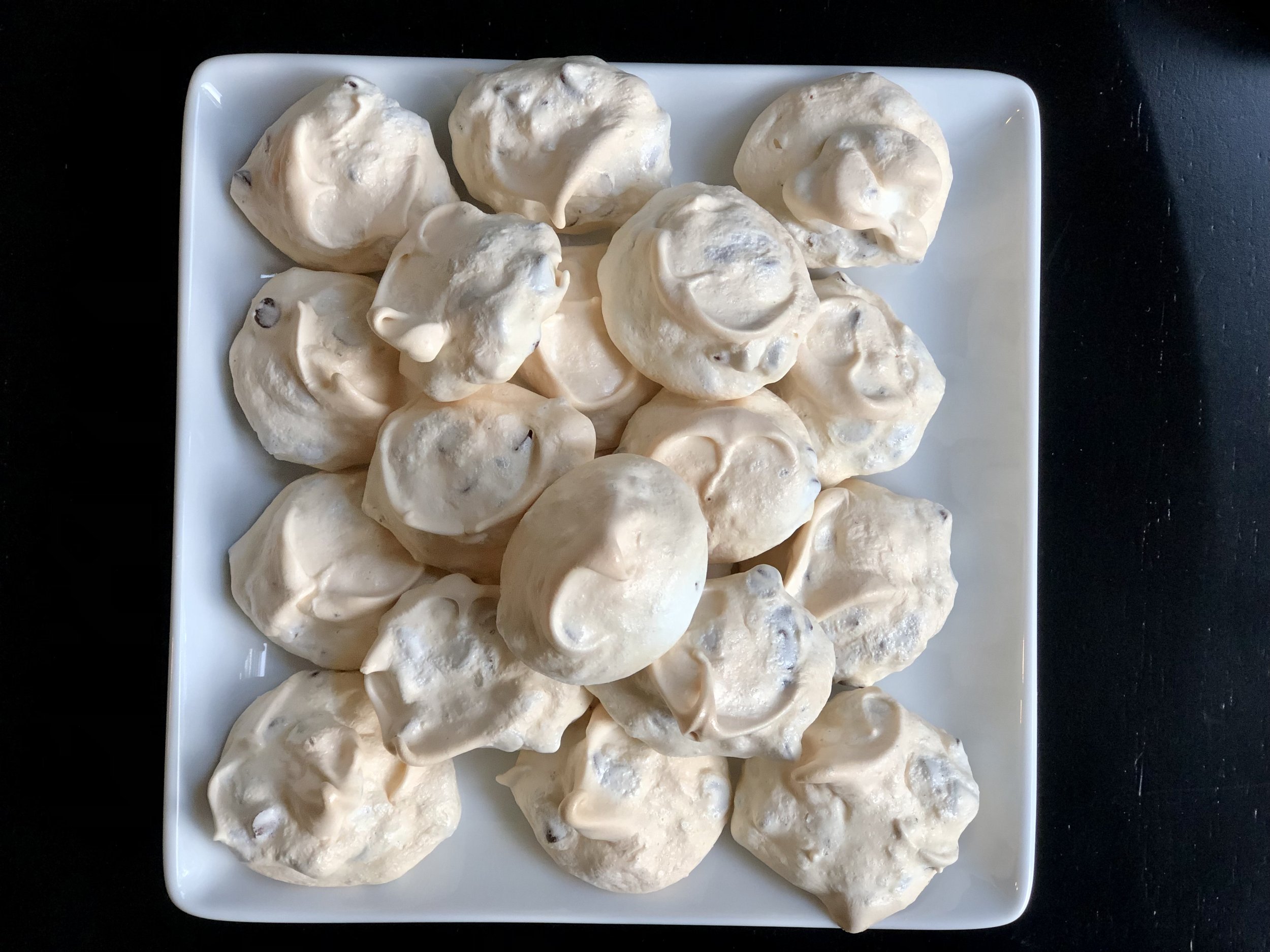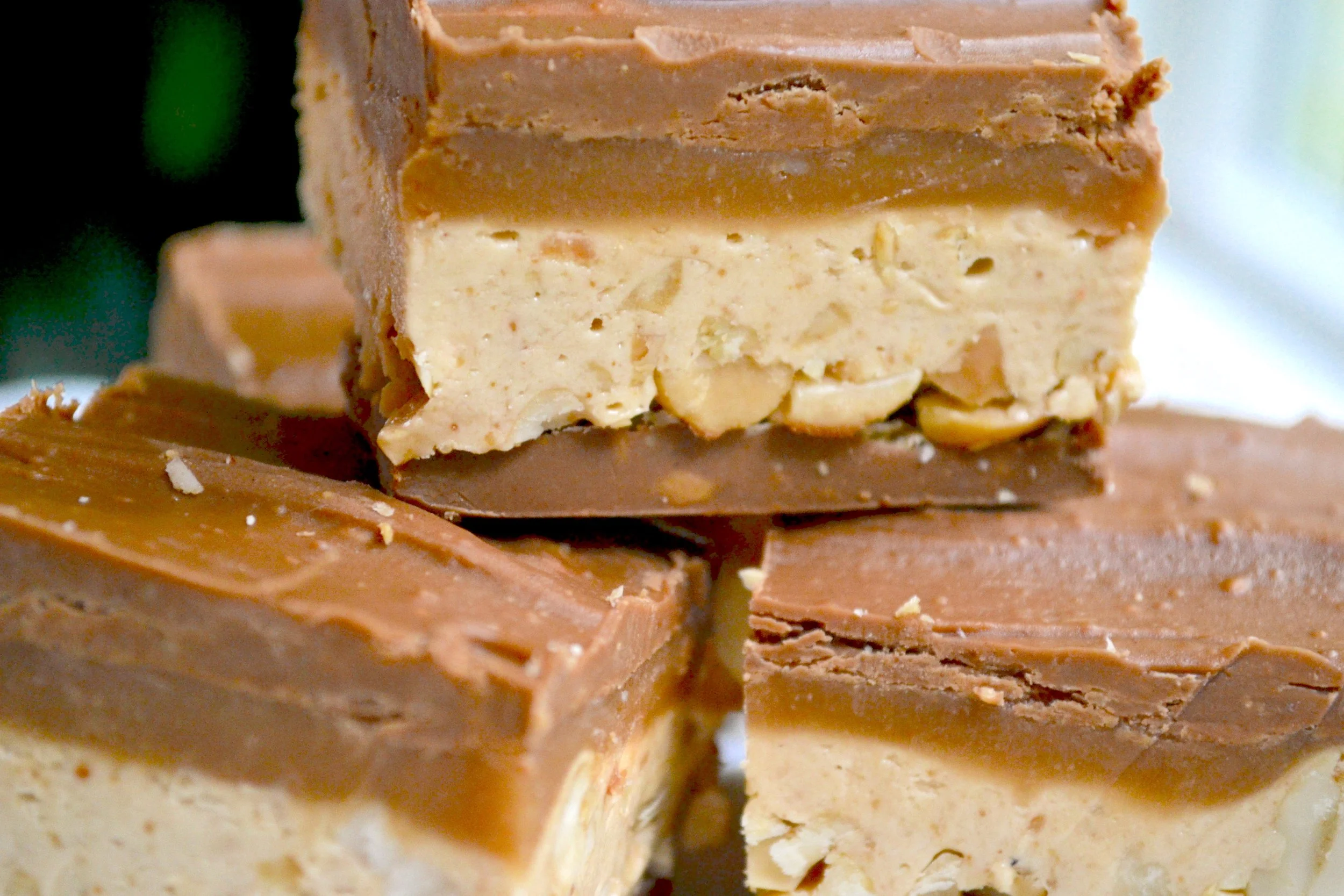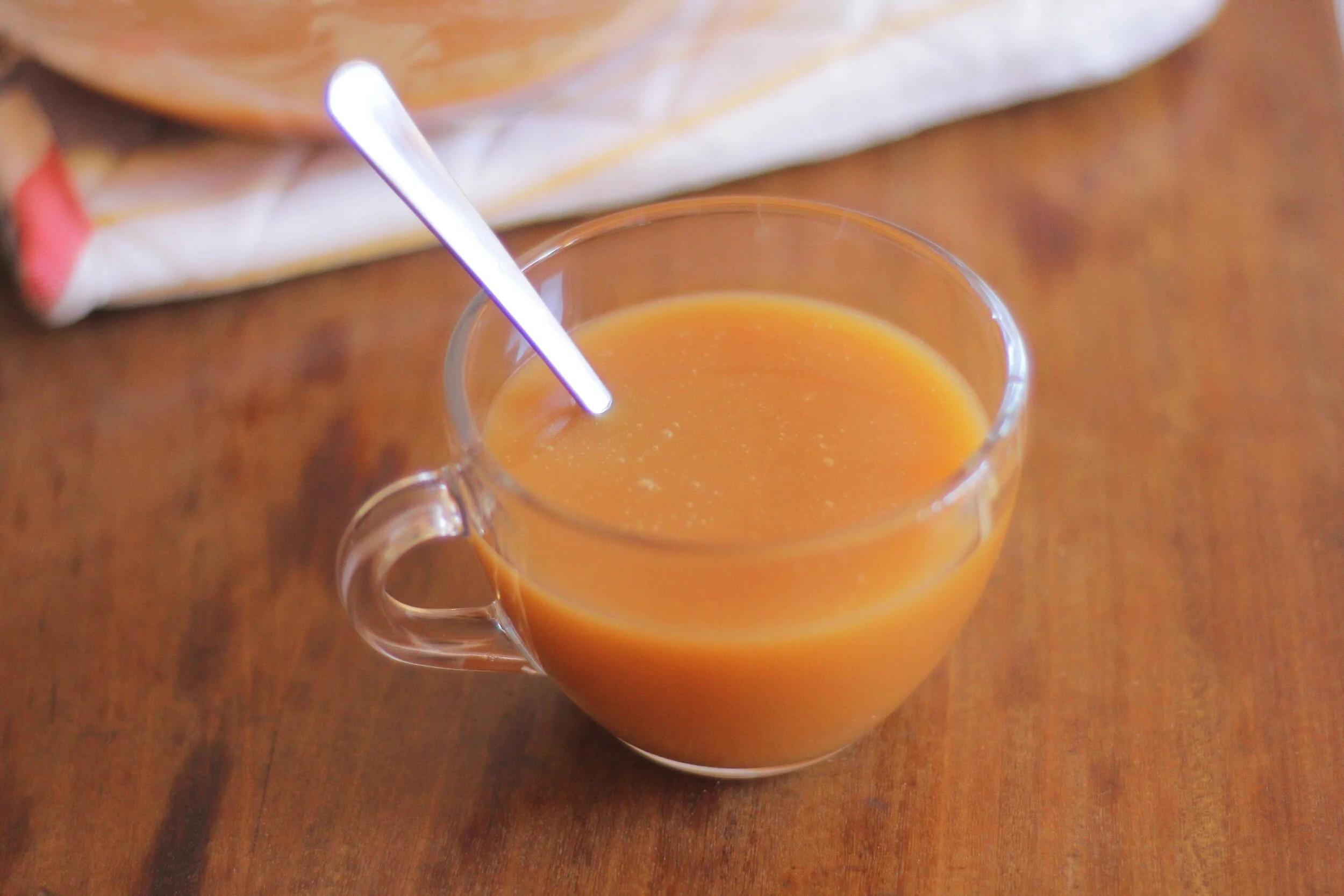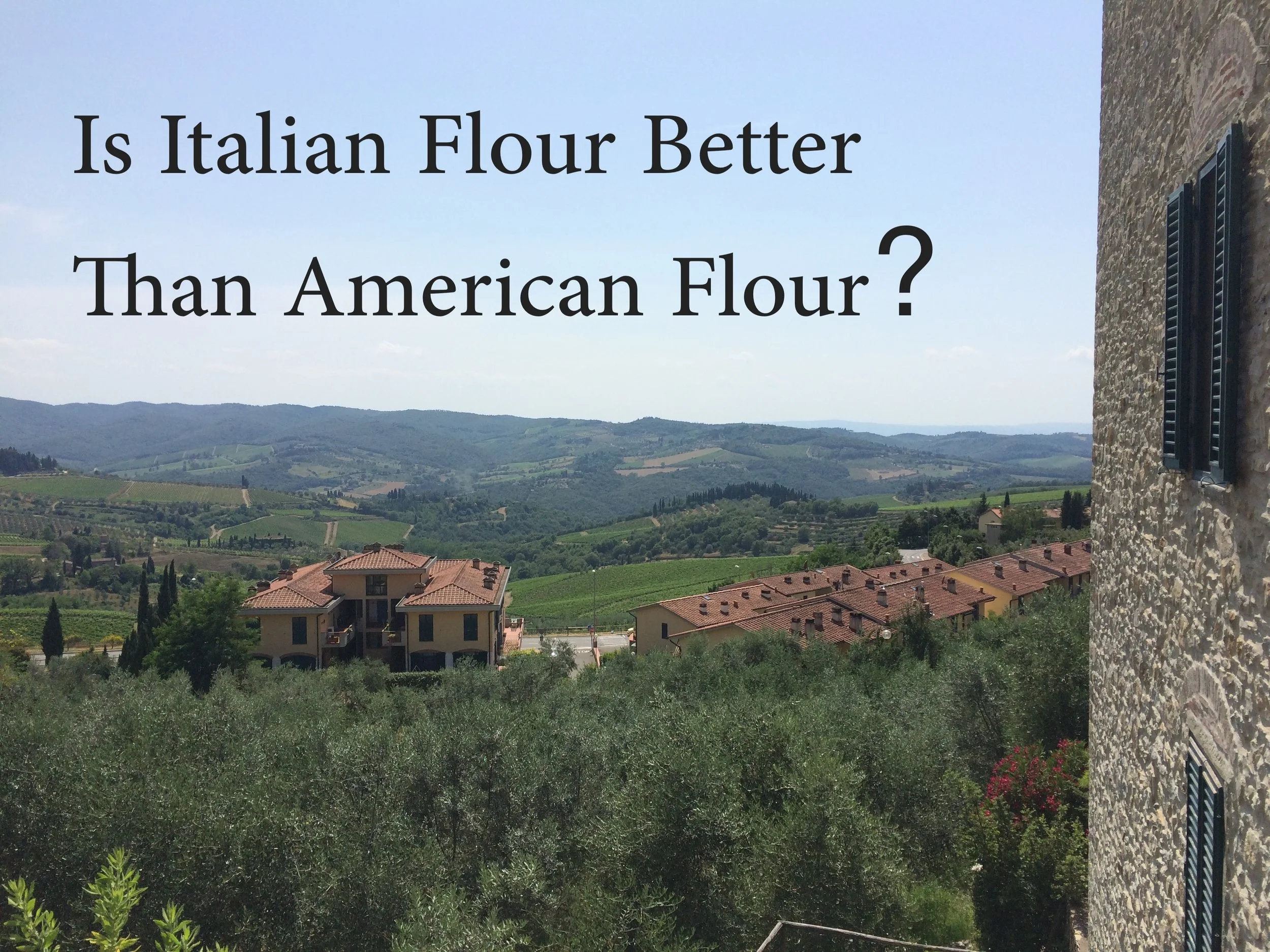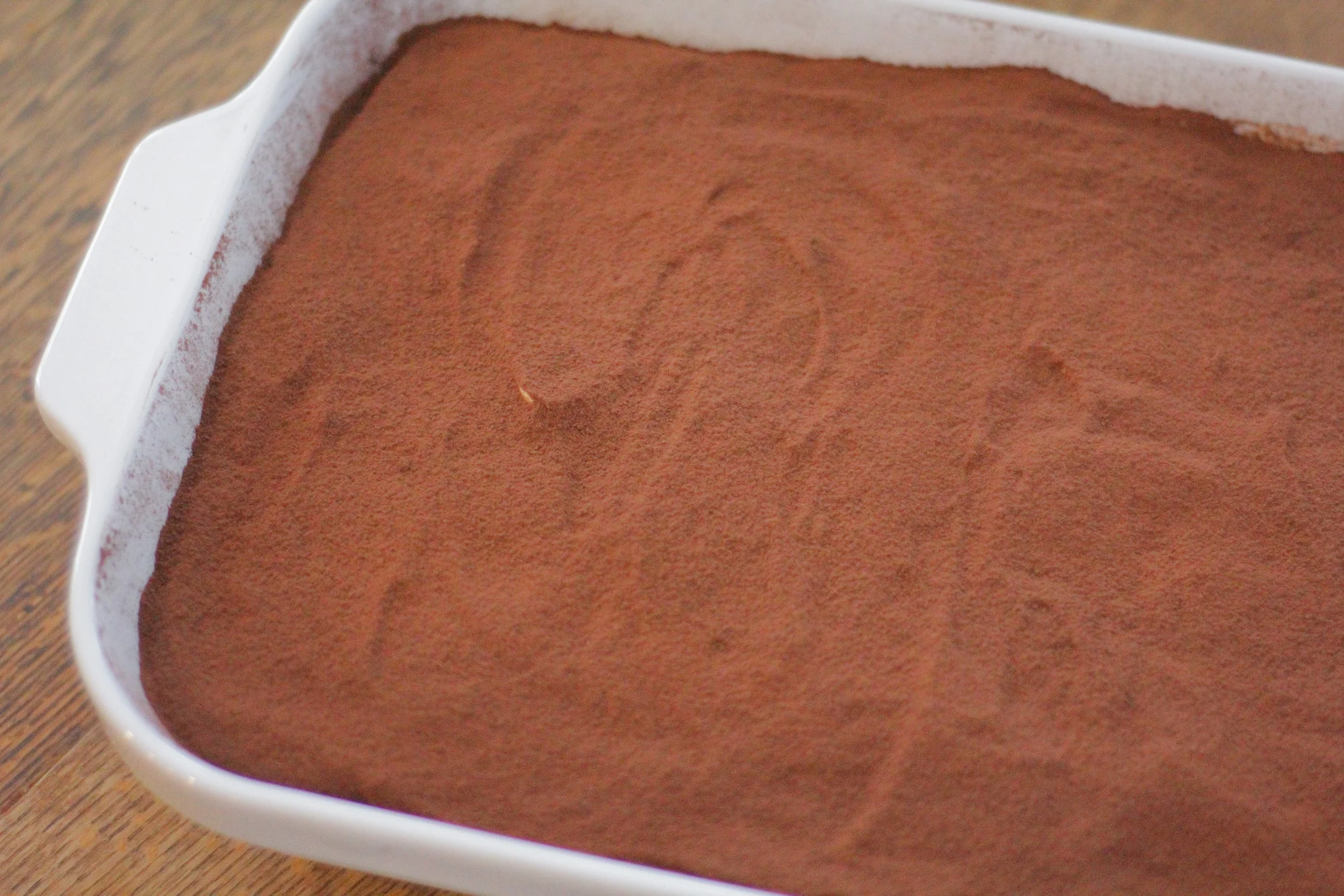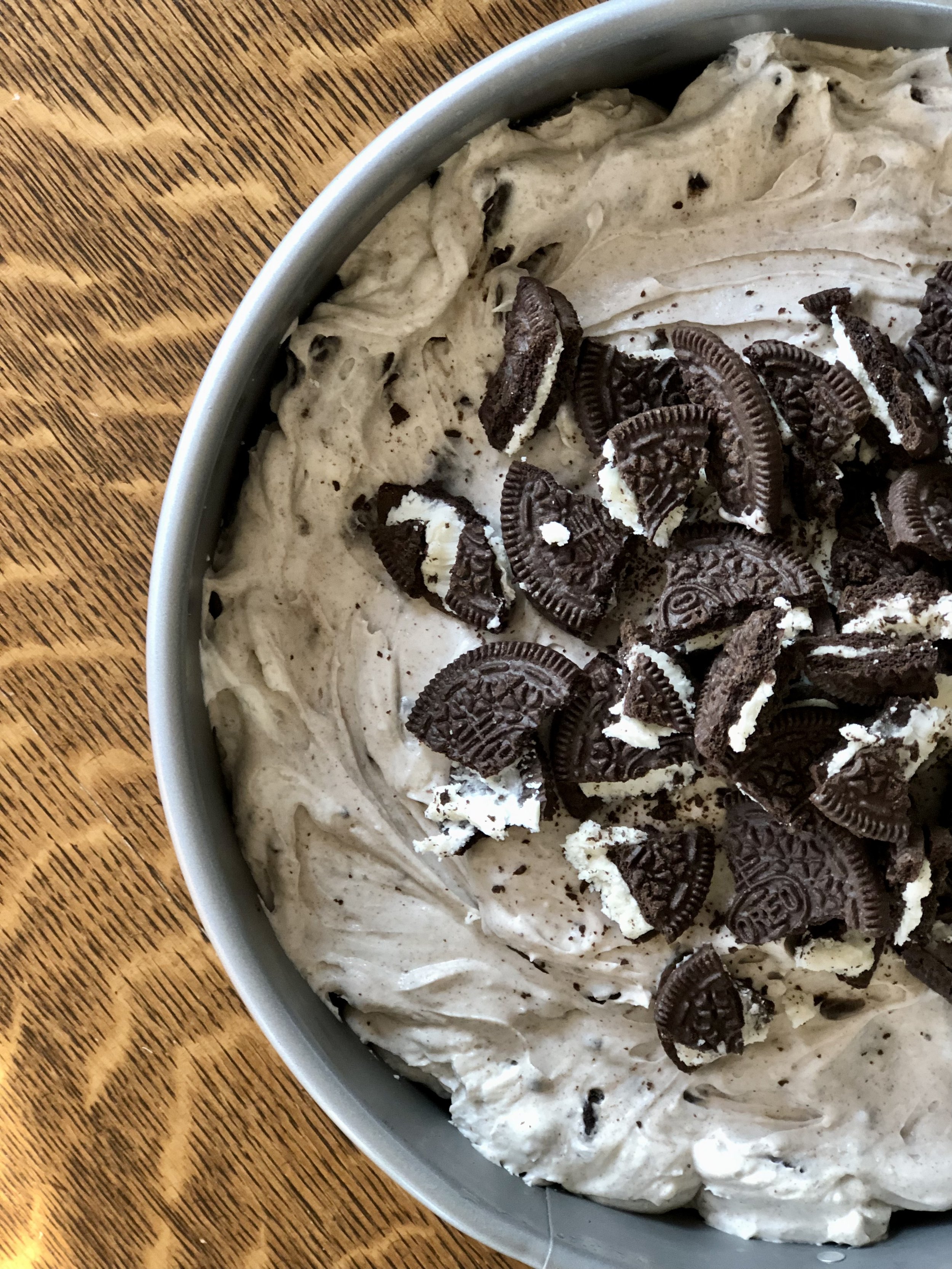New York Style Cheesecake
/Happy December!
Our bellies may still be lamenting the onslaught of food this past weekend, but planning for Christmas will soon be under way, if it’s not already! Actually, for it just being my husband and I (and baby!) eating a 15lb turkey, we demolished it in good time. Read, the only thing left of the turkey is some turkey broth I made from the bones.
What’s on your Christmas menu? Do you have traditional recipes or try new ones every year? A mix of both? One thing that’s not strictly traditional but I love for Christmas…is cheesecake. It just seems so rich and stately, special enough for my favorite holiday, yet not terribly difficult.
If you’re surprised by that last statement, good. This recipe’s point is to make a bakery-worthy cheesecake attainable in your own kitchen. Cheesecake shouldn’t be intimidating to make. Heed a few simple techniques and the rest is as easy as crushing graham crackers and mixing a few ingredients together.
Tips for making great cheesecake
The most difficult part, at least for me, is baking. Under bake, and it won’t set up. Over bake, and it’ll be a bit dry/crumbly, especially near the edges. It just feels wrong to turn off the oven when the cheesecake is still jiggly in the middle! But it’s supposed to be that way because it works. Trust!
My biggest piece of advice for you, don’t rush your cheesecake. While not difficult, it requires time. Shortcuts will jeopardize the final product. Your ingredients need time to come to room temperature, cheesecakes usually bake an hour or upwards, then there is the gradual cooling, and finally, the refrigeration. All essential for the best cheesecake, no cracks. Other things to remember when making cheesecakes:
As mentioned above, it’s important for your ingredients to be room temperature before starting. This may mean pulling out your cream cheese, sour cream, and eggs, etc. first thing in the morning. If it’s particularly cold in your home, you may need to put them near a source of heat. If it’s a holiday baking day, I might put them near the oven that’s giving off heat. You can use a microwave to soften cream cheese, but not eggs. I don’t have a microwave so must stay on top of getting my ingredients out in a timely manner. It’s also possible to stick them in a bowl of warm water to speed up the process.
Use full fat ingredients where possible. This is coming from a person who often cuts corners to lighten up dishes, using less sugar, milk instead of cream, and so on. But if you’re going to eat cheesecake, you might as well make it super creamy. I have often used the lower fat Neufchâtel instead of cream cheese in cheesecakes, but there IS a difference. Enough of one for once I am recommending you use the full fat. Take my word for it or try it yourself, but now you know!
Use a bain-marie. I’ve made many a cheesecake in my shortish life, sometimes with and sometimes without a bain-marie. A bain-marie is simply a water bath that helps the cheesecake bake evenly thus producing a creamier end product and helps prevent cracks. You might be tempted to skip this step, as I have in the past, but I’ve come to the conclusion that it really does help. A water bath alone can’t save a cheesecake that wasn’t made correctly, but it is one of the keys to a perfect cheesecake.
Don’t over mix! In fact, because cheesecake batter shouldn’t be beaten, it’s a good one to mix by hand.
Keeping these simple tips in mind you’re already on your merry way to a fantastic cheesecake.
We’ve all heard of it, but what exactly makes a New York Cheesecake, New York?
To simplify cheesecakes in the most general way possible, there are two kinds. Baked and unbaked. You’ll see unbaked cheesecakes pop up more in hot summer months, but I think most Americans will think of “classic” cheesecake as the baked version. Among the baked variety there are many more categories, I’ve heard of New York style, Chicago style, Pennsylvania-Dutch, Philadelphia, Swedish, Vegan, Roman, Japanese, Savory, among others. Some are made with cream cheese, farmer’s cheese, or ricotta, some are baked in springforms or squarepans. Of the baked variety, probably the most familiar by far is the New York style. And according to some, that’s the only kind that should matter.
In fact, as an American I’m so conditioned to think of cheesecake as the cream cheese based dessert, often in the guise of New York style, that when I try some of the other kinds that use different cheeses, such as ricotta or farmer’s cheese, I don’t like it as well. That’s preference, but for me there is nothing like the silky smooth texture of a cream cheese cheesecake. Here in Italy cheesecake is…weird. Often the cheesecake is more of a semi-freddo or uses ricotta and mascarpone and it’s just not the same. Maybe if it wasn’t called cheesecake I could go into it with more of an open mind. If you’re going to use ricotta, make cannoli!!
A typical cheesecake usually calls for a moderate amount of cream cheese and is “lightened” with sour cream or heavy cream, whereas a New York style is heavy on the cream cheese, with less sour cream or heavy cream. NY style will usually call for 2lbs (32oz or four 8oz blocks; that’s roughly 900g) of cream cheese, has a graham cracker crust, and maybe just a touch of lemon juice or vanilla extract for flavor, nothing more. The density and richness of the cheesecake speaks for itself and needs no more extra fluff. The original recipe used at The Cheesecake Factory uses the iconic sour cream topping. The first time I ever made a cheesecake with a sour cream topping I thought that was the weirdest thing, but it’s so good. You can choose to make a sour cream topping, use a fruit topping, dust with powdered sugar, or just leave your cheesecake plain, as you can see I did in these photos. It might have looked more picture perfect with a topping but I honestly love how it looks with its golden and crackless top.
And that’s it. New York style cheesecake is just a richer, denser, no frills cheesecake. And when done well, as I hope you’ll agree with me this recipe does, it needs nothing else.
This post may contain affiliate links. If you make a purchase using these links, Jennyblogs may receive a small commission, at no extra cost to you. This helps to support Jennyblogs. Where possible, links are prioritized to small businesses and ethically and responsibly made items. For further information see the privacy policy. Grazie!
Recipe adapted from Butternut Bakery
New York Style Cheesecake
Serves 12-16
Ingredients:
For the Graham Cracker Crust
12 sheets / 170g graham crackers
1/3 cup / 66g sugar
1/2 cup / 113g butter, melted
1/2 tsp cinnamon, optional
1/8 tsp salt
For the Filling
32oz / 900g cream cheese, room temperature
1 1/2 cups / 300g sugar
3 Tbsp / 23g cornstarch
4 eggs + 1 egg yolk
2 tsp / 10g vanilla extract
2 tsp / 10g lemon juice
1 cup / 245g sour cream, room temperature
Directions:
Make the Graham Cracker Crust
Oven preheated to 350°F / 177°C. Lightly grease a 9in / 23cm springform pan. Line the sides by cutting two or three strips of parchment paper that are a little bit wider than the springform sides are tall, about 5in / 13cm, and wrap them around the inside of the springform. The parchment paper should rise up a little higher than the sides.
Finely crush graham crackers with a rolling pin or in a food processor. Add sugar, butter, cinnamon, and salt to the graham cracker crumbs in a large bowl or pulse in the processor until graham cracker crumbs are evenly moistened, like wet sand.
Press mixture evenly and firmly into the bottom and up the sides of the springform pan, reaching almost to the top.
Bake in preheated oven for 10 minutes; remove and let cool.
Make the Filling
Reduce oven temperature to 305°F / 152°C. Place one oven rack in the middle and the second below it. Place a large baking dish on the bottom rack. Bring a quart or so of water to boil while you make the cheesecake filling.
In a large bowl combine cream cheese, sugar, and cornstarch with a rubber spatula. The mixture should be smooth.
Add eggs and yolk one at a time, mixing well after each addition.
Add vanilla and lemon juice, mixing until smooth.
Add sour cream, mixing just until combined.
Pour filling over cooled crust, gently tap pan on counter to encourage any air bubbles to come up.
Place cheesecake in oven on the middle rack and pour the boiling water into the baking pan on the rack below. Bake for about 1 hour 40 minutes or until 1-2in / 2.5-5cm of the edges of the cheesecake are set and the center is still jiggly when lightly shaken.
Turn off the oven and crack the oven door, leaving the cheesecake inside for 1 hour.
Remove cheesecake from oven and let cool the rest of the way. Once cool, cover cheesecake and refrigerate for 8 hours or overnight.
Remove sides of springform, top cheesecake if so desired, and serve!
Jenny’s Notes:
When pressing the graham cracker mixture into the springform pay special attention that the corners don’t get too thick.
It might seem unusual to mix a cheesecake by hand, but it’s the simplest and safest way to ensure you’re not incorporating excess air into the batter. You can use a stand mixer or hand held mixer, but only use the lowest speed. While it’s important for the cheesecake batter to be well combined and smooth, too much air that inevitably gets incorporated when over beaten can lead to the cheesecake cracking.
Most often cheesecake recipes call to place the cheesecake IN the bain-marie, but this recipe has you place the cheesecake on the rack ABOVE the bain-marie, so they’re not touching. Why? It’s easier and it works! If you however wish to place the cheesecake in the water bath (if your oven only has one rack or any other reason) first wrap the outside of your springform in tinfoil to keep the water out.
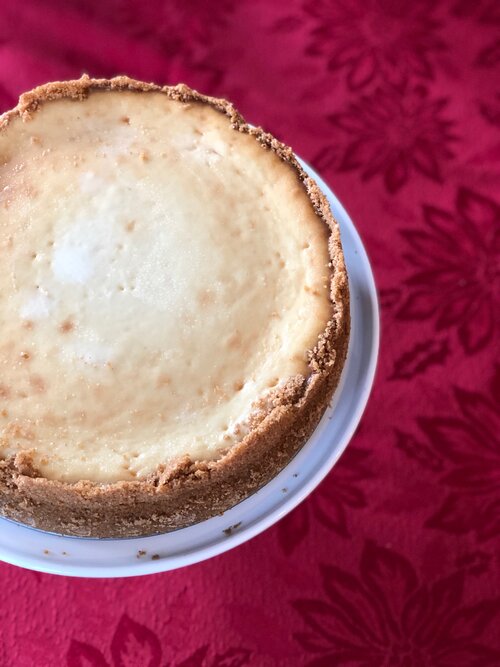
New York Style Cheesecake
Ingredients
Instructions
- Oven preheated to 350°F / 177°C. Lightly grease a 9in / 23cm springform pan. Line the sides by cutting two or three strips of parchment paper that are a little bit wider than the springform sides are tall, about 5in / 13cm, and wrap them around the inside of the springform. The parchment paper should rise up a little higher than the sides.
- Finely crush graham crackers with a rolling pin or in a food processor. Add sugar, butter, cinnamon, and salt to the graham cracker crumbs in a large bowl or pulse in the processor until graham cracker crumbs are evenly moistened, like wet sand.
- Press mixture evenly and firmly into the bottom and up the sides of the springform pan, reaching almost to the top.
- Bake in preheated oven for 10 minutes; remove and let cool.
- Reduce oven temperature to 305°F / 152°C. Place one oven rack in the middle and the second below it. Place a large baking dish on the bottom rack. Bring a quart or so of water to boil while you make the cheesecake filling.
- In a large bowl combine cream cheese, sugar, and cornstarch with a rubber spatula. The mixture should be smooth.
- Add eggs and yolk one at a time, mixing well after each addition.
- Add vanilla and lemon juice, mixing until smooth.
- Add sour cream, mixing just until combined.
- Pour filling over cooled crust, gently tap pan on counter to encourage any air bubbles to come up.
- Place cheesecake in oven on the middle rack and pour the boiling water into the baking pan on the rack below. Bake for about 1 hour 40 minutes or until 1-2in / 2.5-5cm of the edges of the cheesecake are set and the center is still jiggly when lightly shaken.
- Turn off the oven and crack the oven door, leaving the cheesecake inside for 1 hour.
- Remove cheesecake from oven and let cool the rest of the way. Once cool, cover cheesecake and refrigerate for 8 hours or overnight.
- Remove sides of springform, top cheesecake if so desired, and serve!
Notes
- Room temperature ingredients are essential for making a cheesecake correctly!
- While I'm for lightening up recipes to make them healthier, cheesecake is one area I fully endorse using full-fat ingredients!
- When pressing the graham cracker mixture into the springform pay special attention that the corners don’t get too thick.
- It might seem unusual to mix a cheesecake by hand, but it’s the simplest and safest way to ensure you’re not incorporating excess air into the batter. You can use a stand mixer or hand held mixer, but only use the lowest speed. While it’s important for the cheesecake batter to be well combined and smooth, too much air that inevitably gets incorporated when over beaten can lead to the cheesecake cracking.
- Most often cheesecake recipes call to place the cheesecake IN the bain-marie, but this recipe has you place the cheesecake on the rack ABOVE the bain-marie, so they’re not touching. Why? It’s easier and it works! If you however wish to place the cheesecake in the water bath (if your oven only has one rack or any other reason) first wrap the outside of your springform in tinfoil to keep the water out.
Nutrition Facts
Calories
591.48Fat
40.97 gSat. Fat
22.97 gCarbs
49.39 gFiber
0.59 gNet carbs
48.80 gSugar
37.88 gProtein
8.53 gCholesterol
185.41 mgSodium
396.34 mgNutritional information is approximate. Based on 12 servings.




